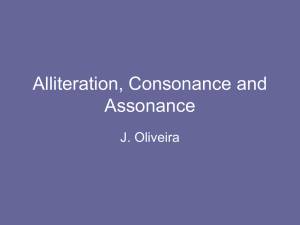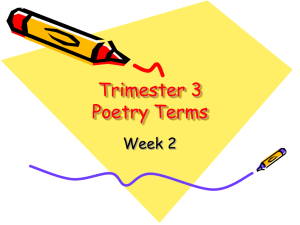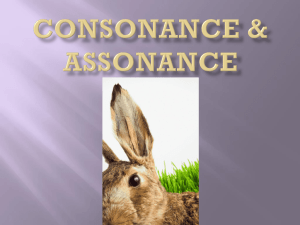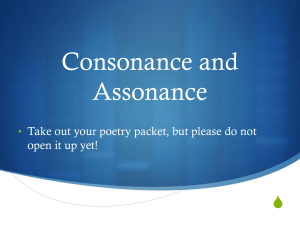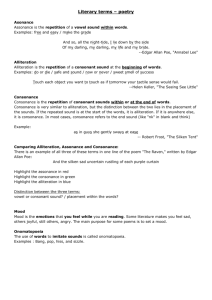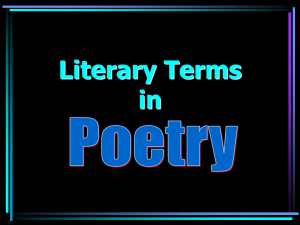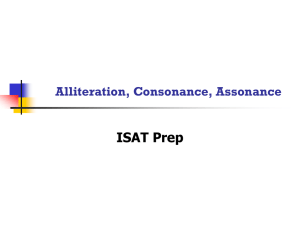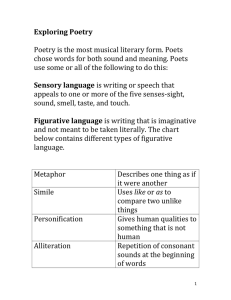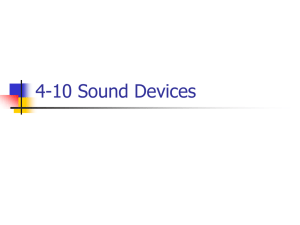Poetic devices pt 2
advertisement
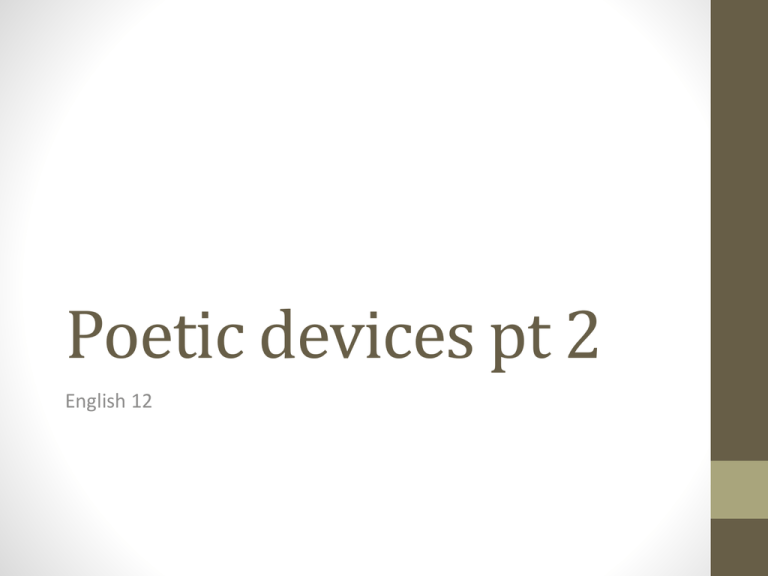
Poetic devices pt 2 English 12 Review • What do the following terms mean? • • • • • • • Simile Metaphor Symbol Imagery Hyperbole Litotes Personification • • • • Apostrophe Metonymy Synechdote Oxymoron Allusion • a brief and indirect reference to a person, place, thing or idea of historical, cultural, literary or political significance. It does not describe in detail the person or thing to which it refers. It is just a passing comment and the writer expects the reader to possess enough knowledge to spot the allusion and grasp its importance in a text. “So Eden sank to grief, So dawn goes down to day. Nothing gold can stay.” Nothing Gold Can Stay By Robert Frost Onomatopaiea • defined as a word, which imitates the natural sounds of a thing. It creates a sound effect that mimics the thing described, making the description more expressive and interesting. “The moan of doves in immemorial elms, And murmuring of innumerable bees…” “Come Down, O Maid” By Alfred Lord Tennyson Euphemism • refers to polite, indirect expressions which replace words and phrases considered harsh and impolite or which suggest something unpleasant. • Euphemism is an idiomatic expression which loses its literal meanings and refers to something else in order to hide its unpleasantness. For example, “kick the bucket” is a euphemism that describes the death of a person. “Royal wench! She made great Caesar lay his sword to bed. He plowed her, and she cropped.” Othello Alliteration • It is a stylistic device in which a number of words, having the same first consonant sound, occur close together in a series. “The fair breeze blew, the white foam flew, The furrow followed free; We were the first that ever burst Into that silent sea.” The Rime of the Ancient Mariner By S.T. Coleridge Assonance • takes place when two or more words close to one another repeat the same vowel sound but start with different consonant sounds. • The words do share the same vowel sounds but start with different consonant sounds unlike alliteration that involves repetition of the same consonant sounds. “Do not go gentle into that good night, Old age should burn and rave at close of day; Rage, rage, against the dying of the light. Grave men, near death, who see with blinding sight, Blind eyes could blaze like meteors and be gay, Rage, rage against the dying of the light.” Do Not Go Gentle Into That Good Night -Dylan Thomas Consonance • Consonance refers to repetitive sounds produced by consonants within a sentence or phrase. This repetition often takes place in quick succession such as in pitter, patter. • The literary device of consonance is inherently different from assonance which involves the repetition of similar vowel sounds within a word, sentence, or phrase. Another distinction to be appreciated is that of between consonance and rhyme. In the case of rhyme, consonant sounds can be present at the beginning, middle, or end of several successive words, rather than merely at the ends of words. Further, the device of consonance needs to be distinguished from alliteration. In contrast to alliteration, consonance involves repetition of consonant sounds only. Example of Consonance ‘T was later when the summer went Than when the cricket came, And yet we knew that gentle clock Meant nought but going home. ‘T was sooner when the cricket went Than when the winter came, Yet that pathetic pendulum Keeps esoteric time. “T was Later Summer Went” By Emily Dickinson Caesura • a rhythmical pause in a poetic line or a sentence. It often occurs in the middle of a line, or sometimes at the beginning and the end. At times, it occurs with punctuation; however, at other times it does not. Dead ! One of them shot by the sea in the east… What art can a woman be good at? || Oh, vain ! What art is she good at, || but hurting her breast With the milk-teeth of babes, || and a smile at the pain ? Ah boys, //how you hurt! || you were strong as you pressed, And I proud, || by that test. “Mother and Poet” by Elizabeth Barrett
